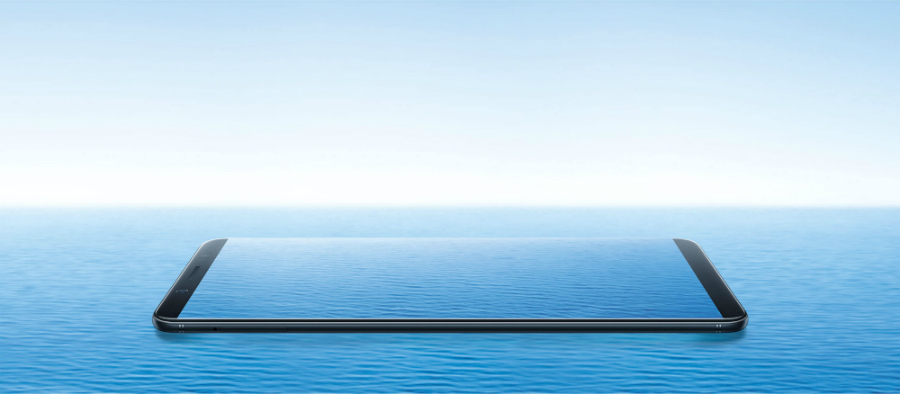Over the past few years, the tech community has been abuzz with the possibility of an in-screen fingerprint sensor on mobile devices. While this did not materialise in 2017, it seems 2018 is the year that will mark the arrival of this exciting new feature. Though leading companies like Apple and Samsung may have been among those working to introduce this technology to the public, Chinese manufacturer Vivo has beaten them to the punch.
Arriving at the end of January 2018, Vivo will present the first smartphone boasting an in-display fingerprint scanner. Rather than using a home button---common to older models of iPhone---or a fingerprint scanner on the back, this new approach has no need for external buttons or awkward scanner placement.
The Vivo smartphone, which was unveiled recently at CES 2018, does not yet have an official name (though speculation suggests in may be crowned the X20 Plus UD), but it is essentially an identical model to the previously released Vivo X20 Plus. This new phone, however, comes without the rear fingerprint scanner and instead includes the fresh, innovative feature: the groundbreaking in-screen fingerprint sensor.
How Does This Work?
For several years, smartphones have been capable of fingerprint recognition. This has helped to make mobile usage more streamlined and efficient. Many users prefer accessing their device via their thumbprint or fingerprint, rather than entering a pin code.
But the in-screen placement takes mobiles even further into the future. This in-display technology enables devices to recognise the fingerprints of their owners without the need for an extraneous button. Developed by Synaptics, leaders in human interface technology, this is known as a Clear ID optical fingerprint sensor. Within the phone, the sensor is affixed between the mainboard and the OLED panel. When touched, the OLED display illuminates the fingerprint, allowing the scanner to read the fingerprint and verify the user. It should only take a single touch to correctly activate the sensor and unlock the device.
The sensor is located near the bottom of the screen, the natural placement for one’s thumbprint, and where users have grown accustomed to finding a home button. The fingerprint display is not constantly visible on-screen, appearing only when required (such as when unlocking). It remains conveniently (and perhaps magically) out of site when it is not needed.
This type of in-display sensor is designed for smartphones with infinity displays. The technology renders the need for buttons and bezels obsolete, meaning phones can adopt full screen displays and the sleekest looks yet. The Clear ID optical fingerprint sensors are sensitive through glass, and can be activated with wet or dry fingers. Its embedded in-display location keeps the sensor safe, protecting it from moisture or scratching.
The in-screen fingerprint technology is also remarkably secure. With a range of unique and highly-secure authentication features, Vivo and Synaptics claim that it is both faster and more reliable than alternative biometrics (such as facial recognition).

As easy as a simple touch, without using a button
About this Exciting New Smartphone
The newly released phone is not the first time Vivo has made waves. This company has a reputation for making strides when it comes to smartphone technology. They were one of the first to adopt deca-core processors and also known for manufacturing one of the thinnest ever smartphones at the time. This latest milestone is certainly an accomplishment by Vivo. Though it had been speculated that Apple or Samsung might unveil this technology in 2017, it did not happen for the iPhone X or the Galaxy S8.
Let’s talk about the soon-to-be-premiered Vivo phone. As it’s likely to be a near-twin of the existing Vivo X20 Plus---with the addition of the under-display sensor---we can expect the device to have:
- 6.43” AMOLED display with a 18:9 ratio screen
- A Qualcomm Snapdragon 660 processor
- 4GB of RAM
- A dual-lens, 12 megapixel camera at the rear, a 5 megapixel camera in front
- Dimensions of 165.2 x 80.02 x 7.35 mm
- Weight of 183.1 grams
- Android 7 Nougat OS
Officially launching on January 24th, it is likely the phone will be sold only in China and other Asian markets at first. The price is estimated to hover around 3998 yuan or $781 AUD. This sets it squarely in the high-end mobile category. While user reviews are sure to appear once the phone hits the general public, some who have already interacted with prototypes reported the in-screen sensor to be fast and easy to set up. Many also lauded the phone’s elegant look and its near lack of bezels on the screen.

Minimalist looks lead the way for mobile design in 2018
Why This Technology is Cutting-Edge
This is a monumental event in the mobile phone industry, as it sets a new precedent for the phones and devices of the future. This is the first instance in which a phone with this technology is being commercially released. No longer just a design or even a prototype, this release will see the impact of the new in-screen sensors for real users.
If reports are positive, this could mean that in-screen fingerprint sensors are the way forward. It may also prove the death knell of the Face ID, as seen in Apple’s iPhone X. Though there are many who like the facial recognition approach, there have also been numerous critics, and some research has also demonstrated that Face ID may be shockingly easy to hack.
There are certainly many benefits to the under-display fingerprint sensor. Its location within the phone could prevent potential problems caused by external damage. Synaptics also pride themselves on the efficiency of the Clear ID sensor, stating that the phone can be unlocked without even having to lift the phone from the table. This can make for ease of use when the phone is being used in a variety of situations.
Whichever way the wind blows, following this new step on the path of mobile technology, it is fairly certain that major changes are sure to follow.